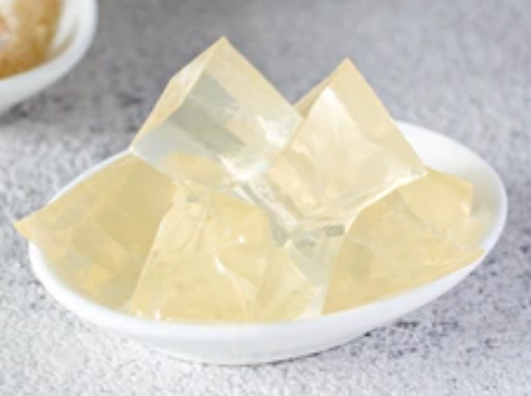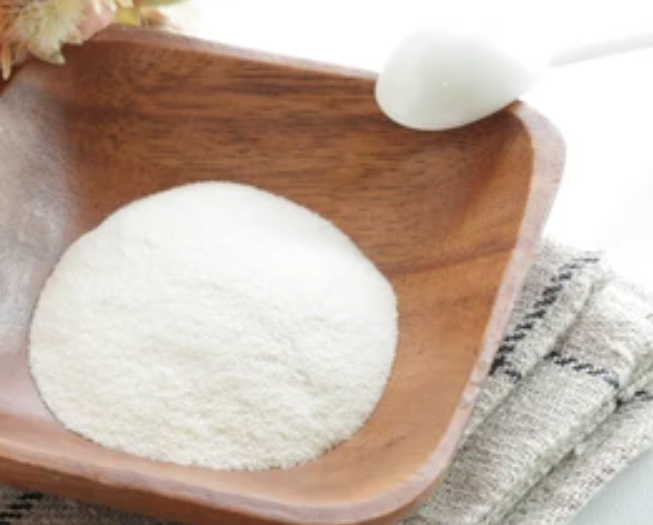What Exactly is Agar?
I am often asked what is agar powder so I thought I’d write this post. Agar powder, also known as kanten, is a gelatinous substance derived from a South East Asian seaweed. It’s used in science (for example, biology), as a filler in paper sizing fabric, and as a brewing clarifying ingredient. Agar can also be used as a laxative and an appetite suppressant (it contains 80 percent fiber).
And, of course, it’s a fantastic culinary ingredient. It’s a vegetarian gelatin alternative that’s used to thicken soups, preserve fruits, make ice cream, and other treats.
How Does Agar Work?
This jelly-like substance is made up of carbohydrates derived from red algae, which is a form of seaweed. Apart from cooking, agar is used as a filler in sizing paper and textiles, as a clarifying ingredient in brewing, and for specific scientific reasons. It’s also called China glass, China grass, China isinglass, Japanese kanten, Japanese gelatin, and dai choy goh, and it’s used in some Japanese desserts.

What Is The Difference Between Gelatin and Agar?
The fundamental distinction between agar and gelatin is where they come from. Unlike animal-based gelatins, which are created from collagen extracted from the cartilage, bones, skin, and tendons of animals, agar-agar is a vegetarian gelatin derived from the red algae plant. The two setting agents also have different properties and must be prepared differently when used in a recipe. Because agar melts at 185 degrees Fahrenheit, and gelatin melts at 95 degrees Fahrenheit, agar-agar must be boiled to set, whereas gelatin can simply be dissolved in warm water. Agar also sets faster than gelatin and requires no refrigeration.
The finished recipe will also have subtle differences: agar-based dishes will be stiffer, less creamy, and jiggly than gelatin-based dishes. When exposed to higher temperatures, agar-agar formulations remain hard, whereas gelatin loses some of its rigidity.
What Does Agar Taste Like?
Agar has no flavor, odor, or color, which makes it very easy to work with. It sets more firmly than gelatin and maintains its firmness as the temperature rises.
Uses of Agar
In the kitchen, agar-agar is used as a vegetarian substitute for gelatin in puddings, mousses, and jellies, as well as ice cream, gummy candies, and cheesecake. It’s a key component in the Japanese dessert anmitsu, which asks for kanten jelly, which is made up of agar-agar, water, and sugar.
Varieties – What Is Agar Powder?
Flakes, powder, bars, and strands of agar are available. Typically, the seaweed is cooked into a gel, pressed, dried, and then crushed to make agar flakes, mixed into a powder, freeze-dried into bars, or turned into strands. Powder is less expensive and easier to work with than flakes because it dissolves virtually instantly, whereas flakes take a few minutes to dissolve and must be blended until smooth. When replacing for gelatin, the powder is used in a 1:1 ratio; when using flakes, use 1/3 the amount of gelatin asked for. A blender or food processor can be used to turn the agar bars, sticks, and flakes into powder. Agar can be flavored and colored in the same way as gelatin can.
 How Do You Prepare Agar?
How Do You Prepare Agar?
Agar must first be dissolved in water and then cooked before being used in a recipe; it cannot be simply dissolved in a liquid or added to food. In a small saucepan over medium-high heat, dissolve the agar in a liquid, bring to a boil, and then simmer until slightly thickened, about five to seven minutes. Agar powder dissolves faster than flakes and strands, which require more soaking time and stirring to dissolve completely. (Before utilizing, process the flakes, bars, and strands into powder.)
To thicken 1 cup of liquid with agar flakes, use 1 tablespoon; to thicken 1 cup of liquid with agar powder, use 1 teaspoon. (When substituting agar for gelatin, a common rule of thumb is to use an equal amount of agar powder and one-third the amount of flakes as gelatin.) It will take around an hour for the dissolved agar to set at room temperature after being added to a recipe. Because most agar recipes are served cold, the dish will need to be kept chilled.
It’s worth noting that foods with a lot of acidity, such citrus fruits, strawberries, and kiwi, may require more agar to properly gel.
Health Benefits of Agar
Agar contains no calories, carbohydrates, sugar, or fat and is high in fiber. It’s gluten-free, soy-free, corn-free, gluten-free, yeast-free, wheat-free, milk-free, egg-free, and preservative-free.
It absorbs glucose in the stomach, moves swiftly through the digestive tract, and prevents the body from accumulating and storing fat. Its water-absorbent qualities also help with trash removal. Agar absorbs bile and causes the body to dissolve more cholesterol as a result.
Where can I get Agar Powder?
Agar powder can be obtained in supermarkets’ natural food sections, health food stores, Asian grocery stores, and online. Although agar flakes are more expensive than powder (and gelatin), they are used in fewer recipes. The least expensive choice is agar strands.
Storage – What Is Agar Powder Storage
Agar in any form should be kept in an airtight container in a cold, dry location, such as the pantry, for at least eight months.

